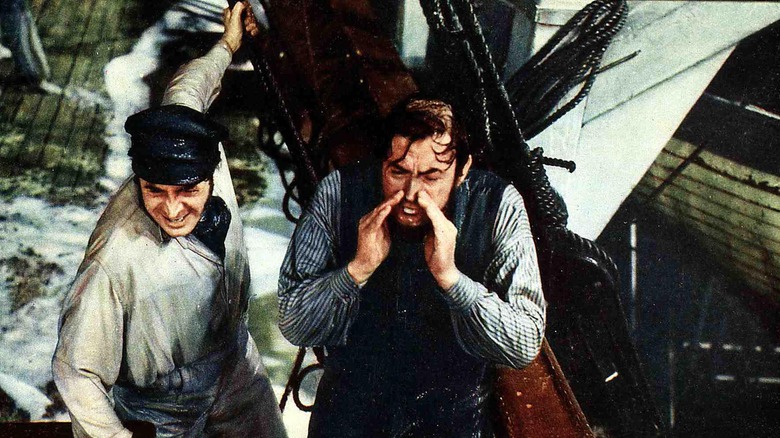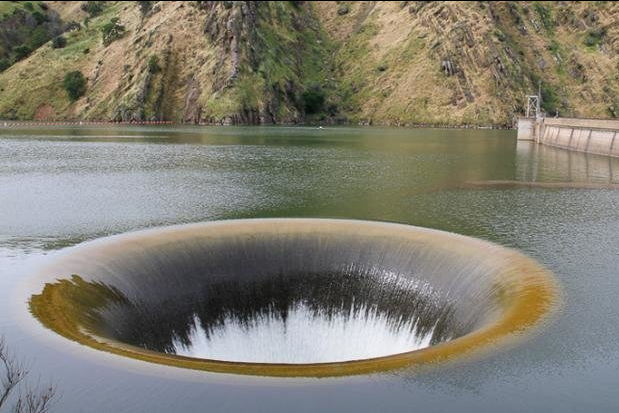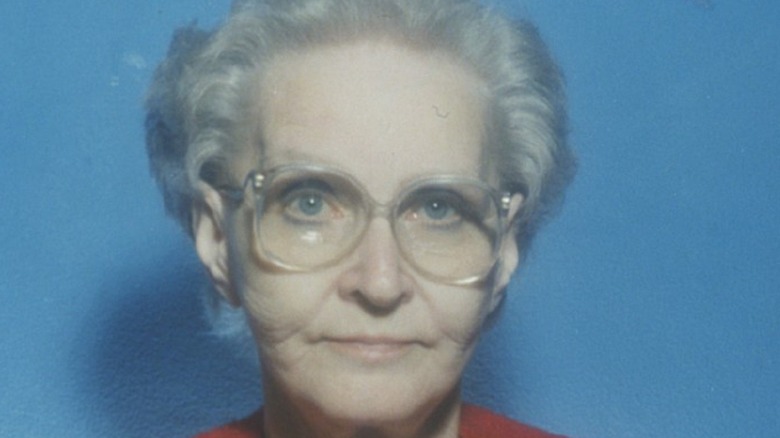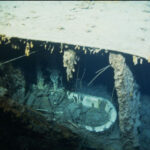
Fascinating Facts About the Titanic
There have been many accounts created about what happened to the RMS Titanic during its maiden voyage from Southampton to New York City, on April 10th, 1912. Its sinking was one of the greatest tragedies of all-time, and one of the deadliest maritime disasters in modern history; it has been a sensitive subject for some years, and then it was only a matter of time before films, books, exhibits, and folk songs would make a dramatic subject out of it.
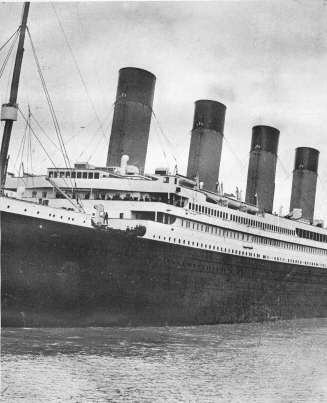
Many are no longer sure of what really happened to the Olympic-class ocean liner, the biggest afloat at its time. Was its mere size and infamous declaration as being unsinkable a direct affront to the divine? Read on to learn more about the fascinating facts and history of the infamous ship that tore the ocean for days, and our hearts forever.
The Ship Was Called ‘Titanic’ for a Reason
There’s a reason the ship was called the Titanic. Not only was it huge, but it was the biggest shipping vessel afloat at the time and, when it set sail, slowly cruising away from its berth and out to the open sea, its size became apparent in comparison to other ships at bay; dwarfing them.
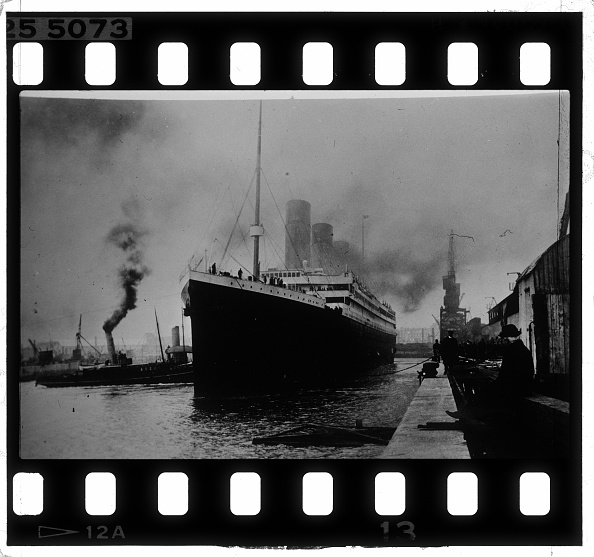
Its name was derived from the Titan of Greek Mythology, a second generation of divine beings, referenced for their colossal size. The ship was 882 feet long, and it towered 175 feet in height. Its rivets on steel plates alone weighed 1,200 tons. Overall, the liner weighed 46,328 tons.
It Could Have Been Even Worse
The sinking of the Titanic had caused great misery with an estimated 2,224 passengers coming in from many countries, bound for New York. Most of them planned to seek a new life abroad, and the total casualties are not exactly known due to some confusion in the passenger’s list.
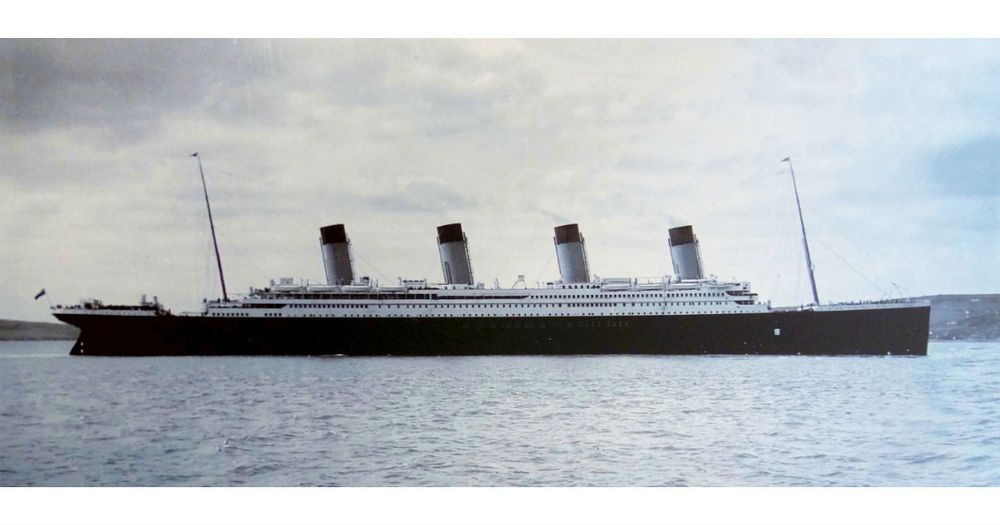
Its death toll is estimated to be around 1,490 to 1,635 people. But considering that the Titanic was under capacity during its maiden voyage on April 10, 1912, things could have gotten much worse. Only 710 people had survived the disaster. Many of them died in minutes submerged in freezing water.
Third Class Died First
The Titanic could have accommodated more than 1,000 passengers in the third classrooms, but only around 709 people were aboard in its maiden voyage, and it is said that a national coal strike could have contributed to this. Some of those who have purchased their tickets might have canceled their plans, while many preferred to wait for the strike to end before planning to go on trips.
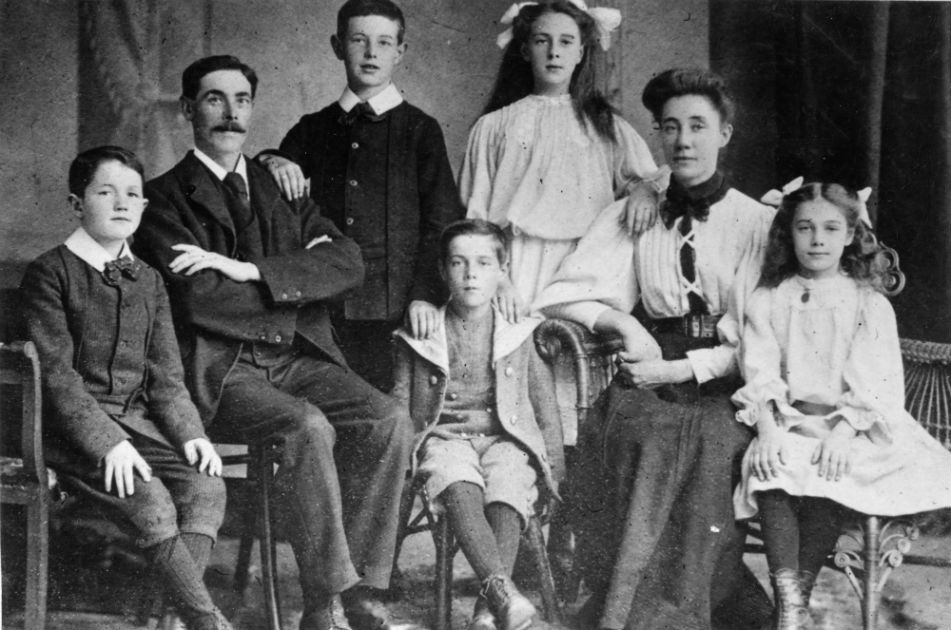
Many had died from the third class accommodations since they were located at the middle and lower decks. The gates were locked to keep the first class decks exclusive, and when the accident happened, this was the first to be inundated with sea water. The panicked crews weren’t able to open the gates, and many were trapped at the bottom.
Ticket Prices Were Unthinkably High
The White Star Line, owner of the RMS Titanic, wanted the design of their new ships to be spacious and comfortable. They wanted to prioritize more on luxury, and there were little financial restrictions given to their engineers and designers during its construction. This also meant that the ship would have to sell their tickets at a much higher price.
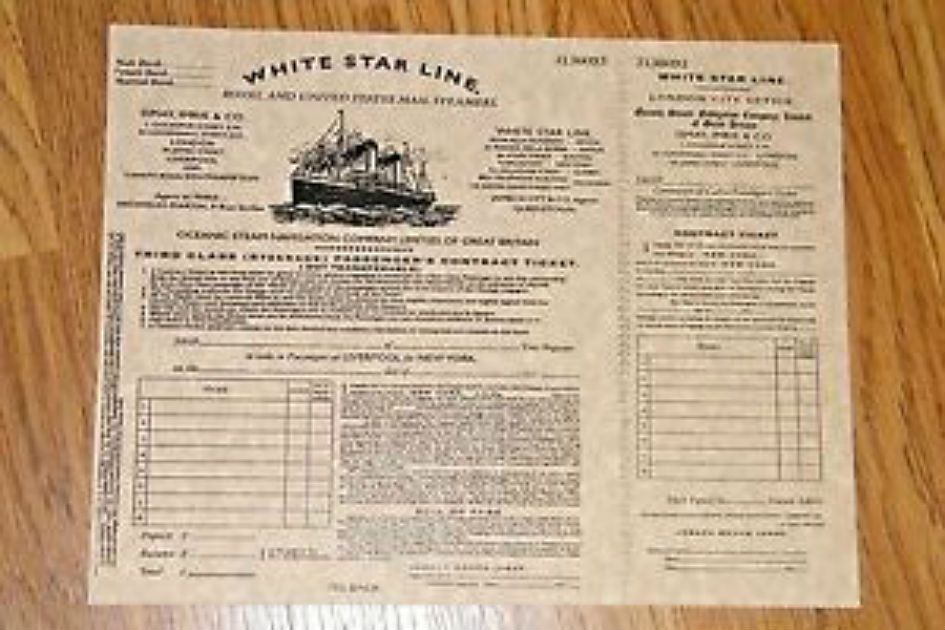
First class tickets at the time were sold from $30 to $4,350. In today’s rates that would be around $775 to $112,000. It’s amenities included having a library, swimming pool, high-end restaurants, and fancy cabins. The second class tickets were from $12 and $60. Equivalent to $300-$1,500 today. And the third class tickets ranged from $8 and $40. That’s for $200-$1,100 today.
The Disaster Was Predicted
The author of the novel Futility, Or Wreck of the Titan, was among those who were shocked at the prediction of the RMS Titanic’s fate. The environmental conditions in the story, and the details of how the ship sank, as well as the description of the liner itself, were strikingly similar, if not accurate.
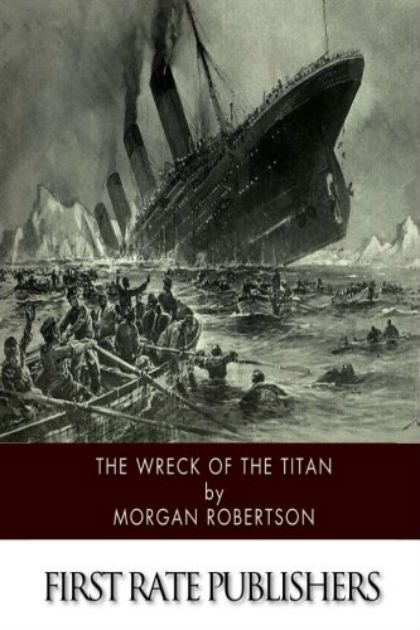
The book by Morgan Robertson was published fourteen years before the tragedy, and many would attribute this to clairvoyance. However, Robertson himself said that he had merely written the book based on his extensive knowledge about ships and sailing. What he had thought of and written as fiction, in other words, was bound to happen one day if shipping standards and rules were not improved.
RMS Stands For Something Odd
The RMS Titanic wasn’t merely a luxury liner that shipped passengers from Southampton to New York, crossing the English Line, to the northern coast of France. Like many ships at the time, it also loaded various cargoes transported for trade and commerce, as well the regular baggage brought by its passengers.
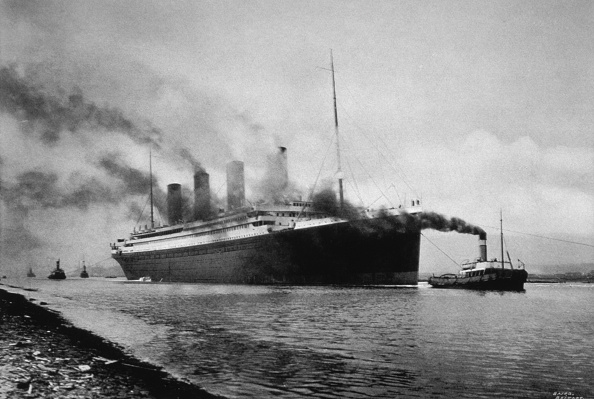
But what many don’t know is that it also carried mails. This was part of a contract between its parent company and the Royal Mail, and RMS actually stands for Royal Mail Ship. The Sea Post Office located on the ship’s G Deck had 5 postal clerks who sorted the mails 7 days a week.
The Crew Was Dutiful to a Fault
The Titanic was designed to carry more than 900 crew members, but only 885 were employed during its maiden voyage. They were only recruited about a month before (March), and many of them boarded the ship on the day itself. Most of them were employed only on a casual basis.
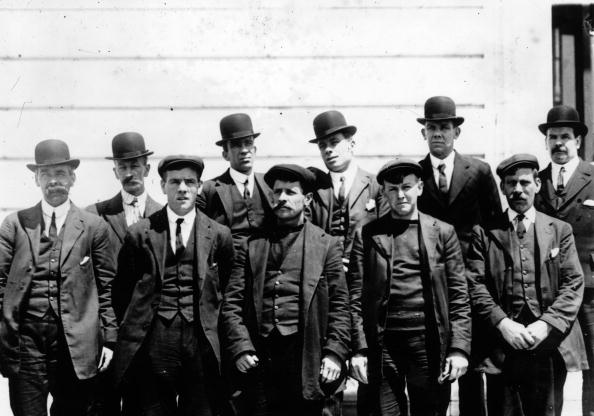
Only 214 crew members survived the accident. Some died minutes after the iceberg impact, as they were stationed on the lower decks. Aside from the second class and third class men, the crew member death count was the highest. Some died assisting passengers in climbing up the higher decks, while the 5 post office clerks died dutifully protecting their cargo.
Many Knew They Would Not Survive
After the RMS Titanic hit a huge iceberg, caving in a part of the starboard side that caused the flooding of the compartments, it didn’t take very long for the ship’s officers, and crew members to realize the that the passenger liner was going to founder. The weather during the early hours of that fateful day was gravely cold, and many of those who fell from the ship didn’t actually drown to death but succumbed to hypothermia.
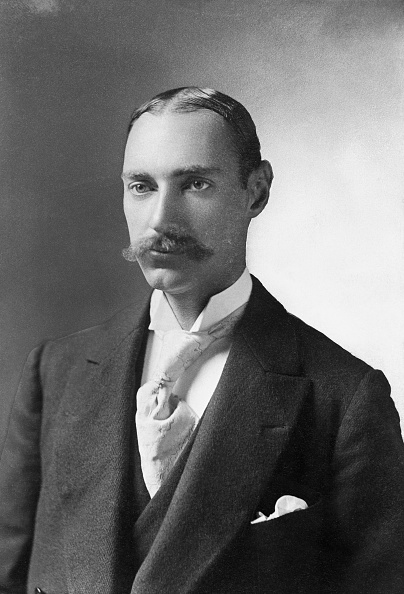
Many of the men saw this and knew they wouldn’t survive, but tried to remain calm, nevertheless, for the sake of their families. One of those men was the ship’s wealthiest guest, John Jacob Astor IV whose wife was pregnant. Sending her off to a lifeboat he was as calm as the icebergs all around were white and placid. “The sea is calm. You’ll be alright. You’re in good hands. I’ll meet you in the morning,” John told his wife reassuringly. He would never see the bright of day.
Many More Almost Went Down
The maiden voyage turned tragedy could have been so much worse had the ship sailed in maximum capacity. But many of those who already had tickets canceled before the day of their trip due to various reasons. For one, there was a coal strike going on. And some of those who actually boarded the ship didn’t intend to stay for the whole length of the journey and were dropped off.
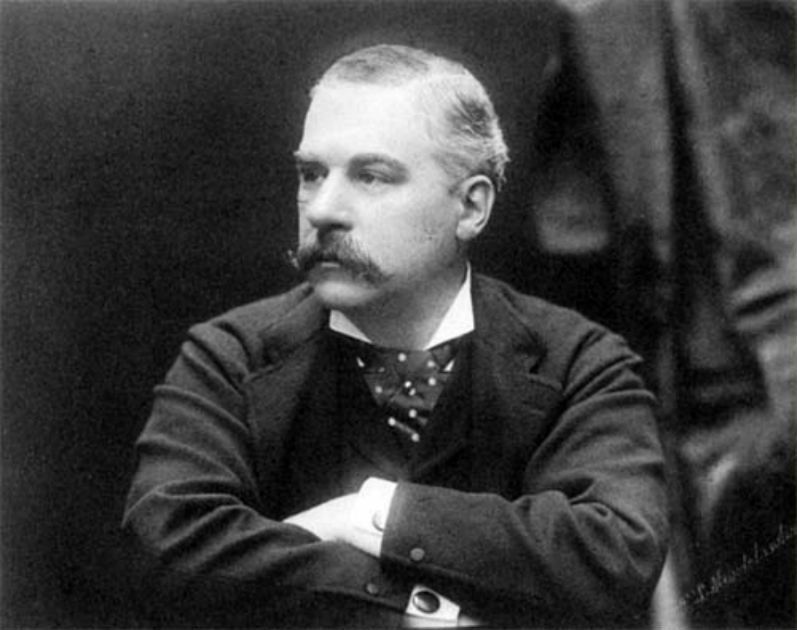
J.P. Morgan was one of those who was supposed to sail along but called off his plans. Plus, the lofty prices of the accommodations had probably rendered many undecided, putting off traveling schedules. Other notable personalities who narrowly avoided the tragedy were Hershey’s owner Milton S. Hershey, and Alfred Gwynne Vanderbilt.
The Ship Ran on Coal Fuel
It would take a number of days for the gigantic ship to sail and reach its destination, passing through some ports along the way, and it had to carry along extra cargo to make this possible. Because its engine ran on coal fuel, it carried along with it 6,000 tons of coal; sailing at an average of 600 tons of coal/day.
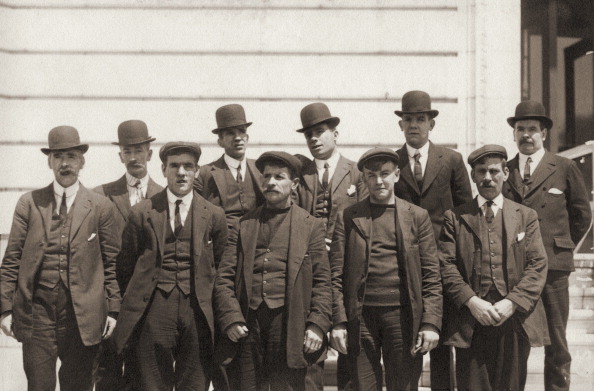
These coals were fed to the broiler at the lower deck where it was hot and fuming hellishly, operated by employees referred to as fireman for obvious reasons. Those at the lower deck were the first victims of the accident. Their working rooms were flooded, and many were left trapped inside after the doors were automatically sealed to keep the ship afloat.
Titanic Had Four Stacks
Due to the size of its structure, the Titanic had long decks; its uppermost deck was open and housed four large funnels known as stacks. They were made of pine and teak, and three of these served as vents for the coal combustion below.
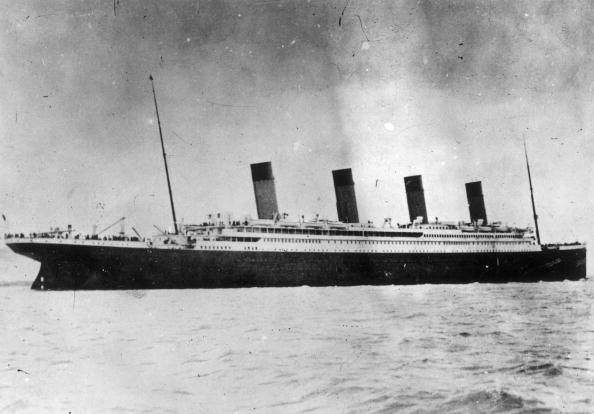
The fourth stack, just as large as the others, was actually built for aesthetic purposes. Other than that, it served a minor function of ventilating the kitchen. The crew members panicked and hurried the ventilation of the steam for fear that the contact of cold water against the heat of the steam would cause the stacks to erupt.
Many of the Crew Members Were Not Sailors
The employment of crew members for the Titanic was done rather hastily with only a month to go before it was scheduled to sail. Those who got training had done so minimally; some even embarked the ship just hours before leaving port. This is one of the reasons why many crew members were ill-prepared and disorganized during the hours following the accident.
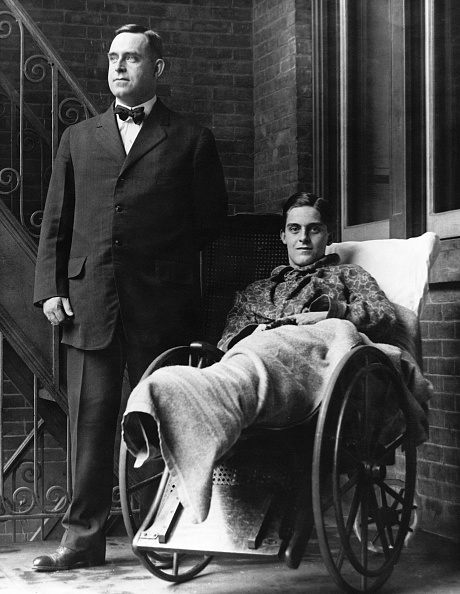
Thomas Whiteley, pictured above, was a steward of the Titanic who broke his leg mounting a lifeboat when debris fell upon him. Beside him is Violet Jessop, also a stewardess of the ship, who had endured the sinking of the RMS Olympic a year before. Jessop would again experience the sinking of the Britannic, also a sister ship of the Titanic that was used as a hospital ship, four years after. Having endured all these trials at sea, she was called “Miss Unsinkable.”
Titanic’s Eateries
Most of the first-class passengers of the liner were housed on the weight-bearing B Deck or the Bridge Deck. Their cabins were spacious and stately, with private promenades. This was also where their fine dining experience would take place, in the À La Carte Restaurant, owned by Luigi Gatti, who also died that night.
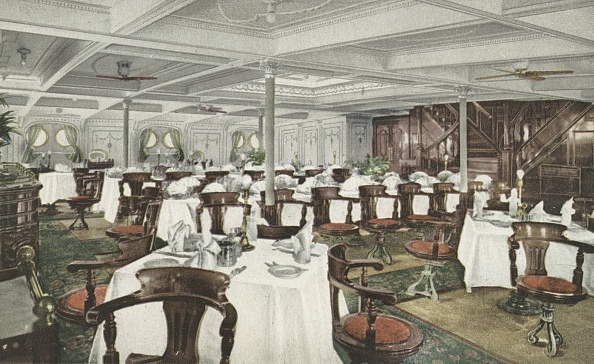
There was also the Café Parisien on the same deck, where passengers had a luxurious variety of meal options. It was a fine leisurely place that was operated by staffs who were all subcontracted. Only 3 members of the restaurant’s staffs survived.
The Ship Was Modeled After the Ritz Hotel
While its competitors built smaller, faster ships, the Titanic and its sister ships were designed bigger and more luxurious. It was the aim of its owner to make it more like a hotel than a ship. In fact, its interior was made to look like a lighter version of the Ritz Hotel in London. Its rooms were inspired by an Empire style; decorative cabin styles ranged from the Renaissance to Louis XV, all coupled with first-class features.
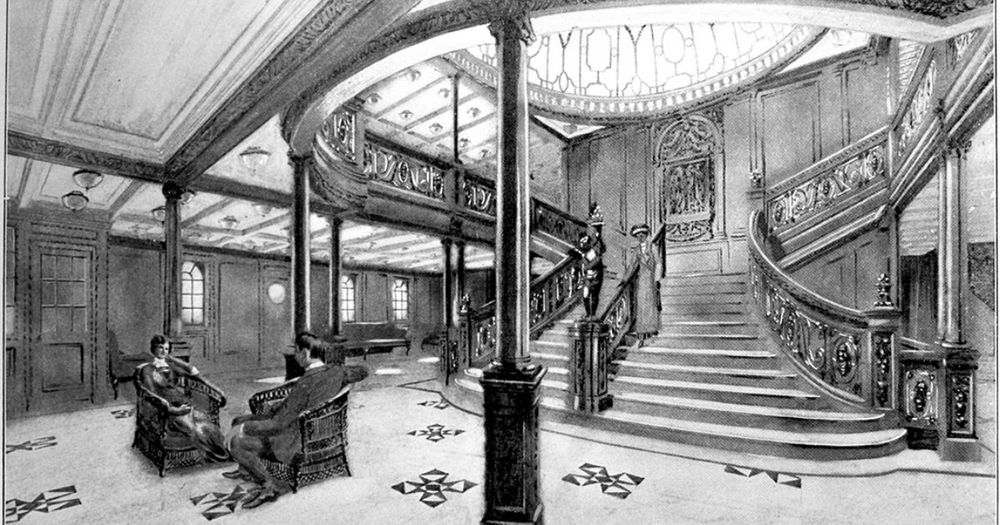
Passengers could while their time in the Veranda Cafe with the panoramic view of the ocean, or palaver at the Cafe Parisien as if they were by the sidewalk in France. Those who wanted to be alone could go find a reading place or write, or weight train at the gym.
The Captain Didn’t Make the Tough Call
William McMaster Murdoch was the officer in charge when the iceberg collision took place. With sixteen years of experience, he was promoted to chief officer of the Titanic but temporarily served as the First Officer that night. Upon seeing the iceberg he commanded the ship to be turned, but there had been many accounts of his order which was hotly debated after the disaster. Some say he called for a “Hard-a-starboard,” to turn the ship to port left, while others say it may have been a Hard a’port.”
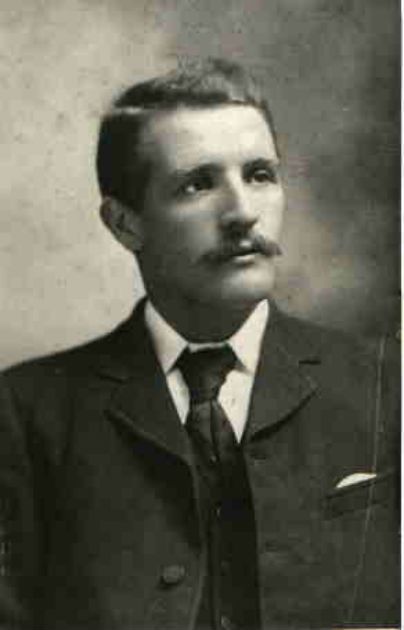
It only took 37 seconds for the ship to hit the large iceberg from the moment of its sighting. Some question the efficiency of his decision and wonder if better commands could have been issued to avoid the accident.
The Captain Was One of the Best
Edward J. Smith quickly rose through the ranks in the prestigious White Star Line with his valuable experiences as a British Merchant Navy Officer. He was known for his stoicism and discipline, and in 1904 he was promoted to commodore of the company’s flagship. He was appointed as captain of the Titanic during its maiden voyage (from Olympic), but he had prior plans of retiring after the assignment.
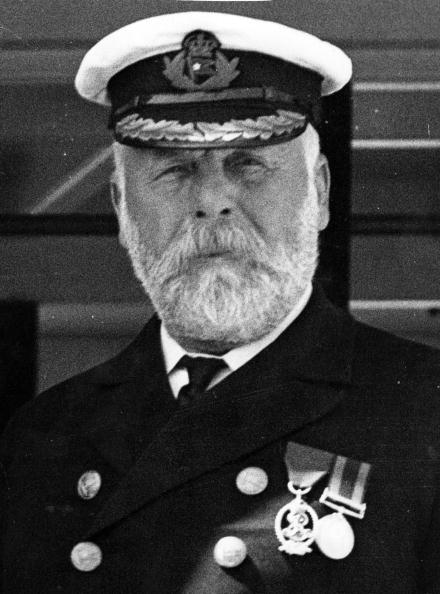
Smith stayed true to his principles and mission as captain even during their final hours of duty. Speaking before his men, he said, “Well boys, do your best for the women and children, and look out for yourself.” Those were his final words.
There Were Several Warnings of Ice From Other Ships
Throughout the day there had been several ships that reported sightings of icebergs along the Titanic’s path. But this wasn’t uncommon, and the captain never thought such conditions could be dangerous. Despite reports of “field and pack ice,” he commanded the ship to sail near full speed.
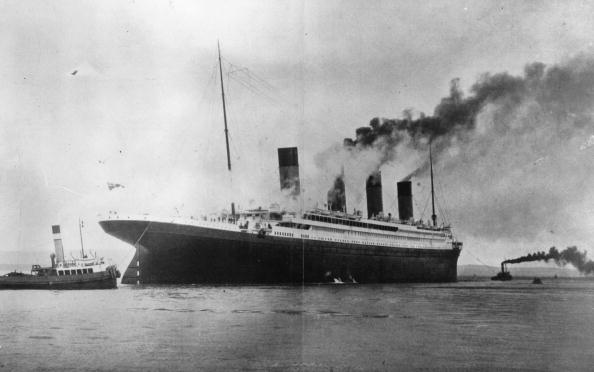
Everything was done by the book. Even the ship’s sailing speed wasn’t deemed negligent, and their operations were properly documented. The SS California was anchored a few miles from the Titanic before the collision. They had been delayed overnight due to the icebergs themselves. But their warnings were cut off by Jack Phillips, the radio operator of the Titanic who was busy taking messages for the passengers.
There Were No Binoculars in the Crow’s Nest
There had been a sort of mix up in Southampton port among the sailors. This was perhaps due to the crossover of officers from the Olympic, or the last hour boarding of crew members. The Titanic sailed its maiden voyage with no binoculars afforded in the crow’s nest.
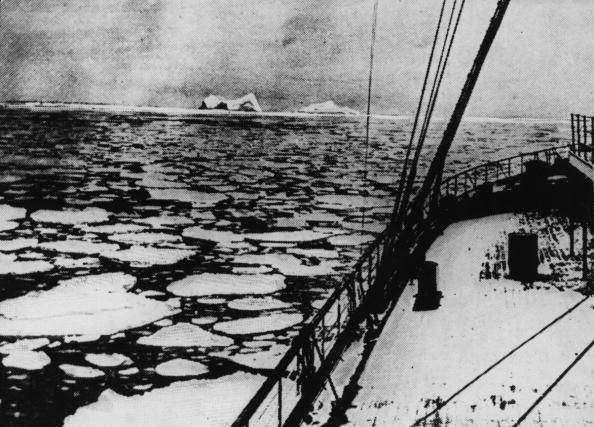
However, this wasn’t deemed pivotal in avoiding the iceberg. Even with a binocular on hand, the night was so dark, devoid of moonlight, that it could not have spotted the iceberg much earlier than the officer did with his own eyes. The surface of the ocean was so tranquil that no one could have detected waves lapping against large floating obstacles.
There Were Only Seconds Until the Impact
With the Titanic cruising near top speed, they were practically sailing dangerously all day; the danger increasing considerably at night. Looking back, reports say there were numerous icebergs spotted in the area, now known as Iceberg Alley.
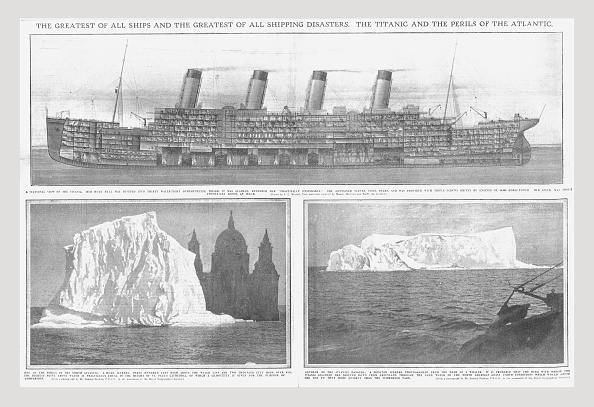
The officer in charge spotted the iceberg and immediately shouted his command. From that very moment, the ship only had 37 seconds to execute the order and avoid the collision. They had very little time, plus adding the fact that there were confusions as to the correct order of the First Officer.
They Had Already Sold Tickets for the Return Voyage
The Titanic was scheduled to make a couple of stops before crossing the Atlantic. It had to be assisted by tenders in and out of both ports of Cherbourg, France and Queenstown, Ireland because they weren’t ready to take in a ship its size. There were some passengers dropped off while 123 passengers boarded it from Queenstown.
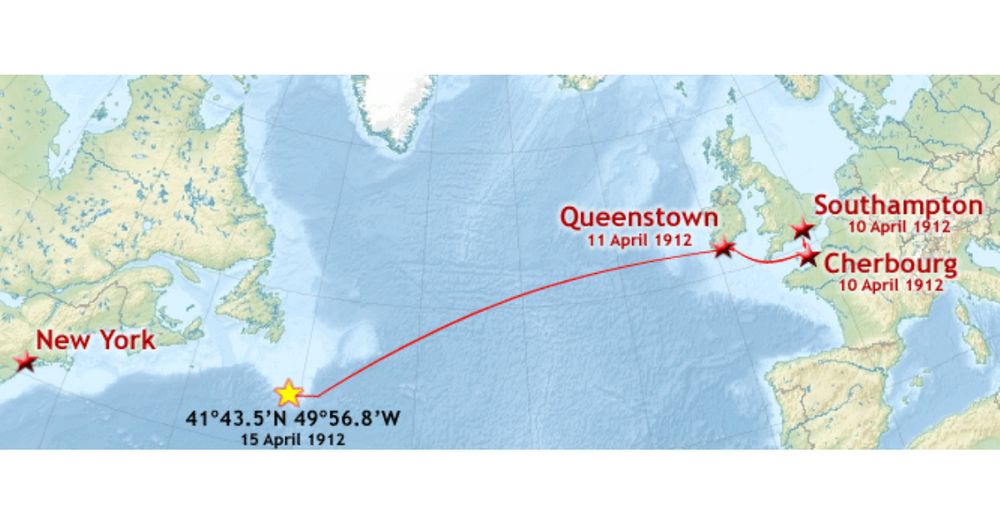
Then it was scheduled to sail to Manhattan. This was where the first and second class passengers were supposed to disembark. And then head to Ellis Island for the third class passengers who needed to pass through immigration. Its return trip tickets had already been booked. The liner was scheduled to leave on the 20th of April, and its itinerary was already filled up until the 28th of December.
There Weren’t Enough Lifeboats for Everyone
The Titanic was capable of carrying 64 lifeboats, but it only installed 20 of them so it wouldn’t block the passengers’ view of the vast ocean. Had they carried as much as they were designed to equip, there is no doubt many lives could have been saved. But this wasn’t in violation of maritime laws at the time.
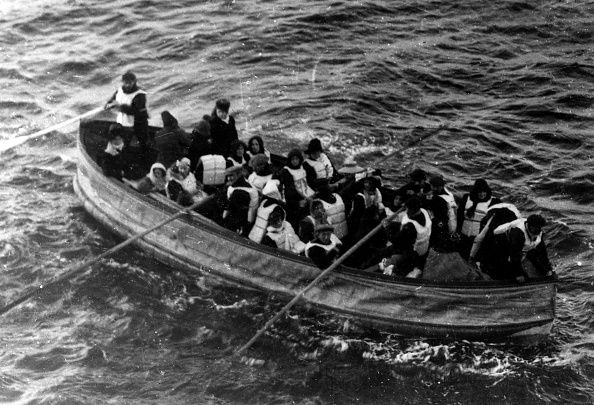
It had just enough number required by maritime standards, as lifeboats were thought to ferry passengers to a rescuing ship and not keep them afloat for a long time.
A Record-Setting Sinking
The once thought unsinkable ship foundered in a record-setting time. While other ships before have sunk after being in similar iceberg collisions, it took them close to 12 hours to actually be fully submerged into the sea. Ironically, in the Titanic’s case, it sank in just 2 hours and 40 minutes. At that time they thought it dropped to the bottom in one piece.
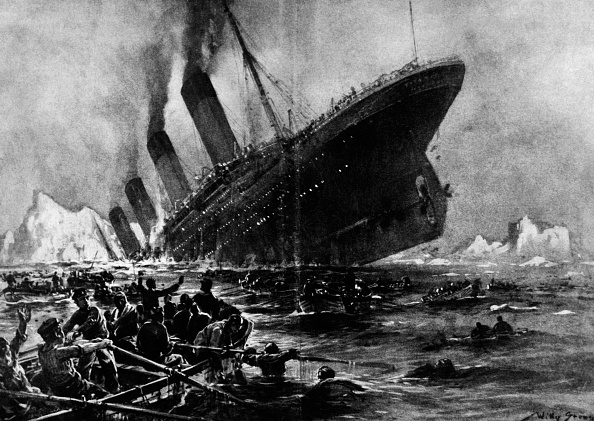
Had it took longer for the liner to sink, as the other ships had in the past, rescue ships could have gotten to the area to help. The Carpathia arrived at around 4 a.m., and it could have helped by contacting other ships within the proximity.
The Iceberg Stayed Afloat Nearby
For all the stories about the Titanic’s might and size, it is perhaps normal for anyone to wonder what had become of the object it had rammed. The reports had already reached other vessels about it hitting an iceberg, and this steward was among those who happened to pass by Iceberg Alley the next day.
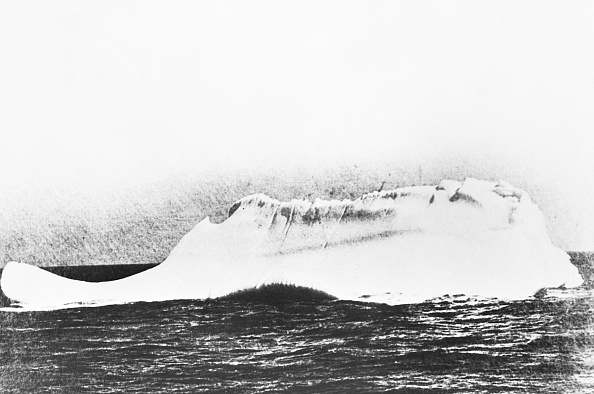
He took photographs of the place, at the same time watching for clues to determine how the Titanic met its deadly fate. He saw this large iceberg with a large black mark on its side. He took an ominous picture of it still floating as if it had merely shrugged off the tragic event of the night before. The Titanic was clearly no match to it.
The Orchestra Played Happy Tunes
If you’ve watched the film Titanic starring Leonardo DiCaprio and Kate Winslet, you must remember the scene where, in the middle of growing chaos, the ship’s band made quite an effort to play upbeat music. It was a little sweet and sad to watch at the same time as everything else that was going on on board.
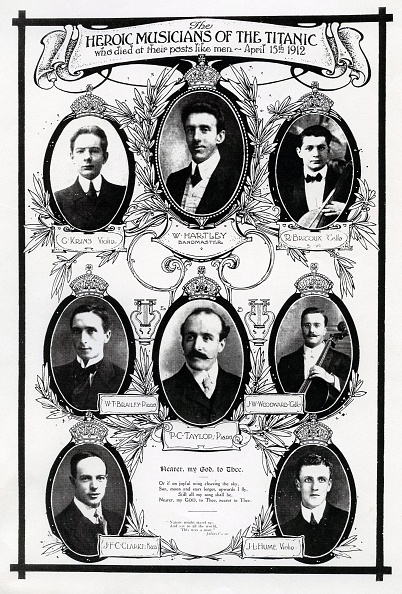
All that happened in the actual event of the sinking. To avoid the passengers from panicking, they played happy tunes to appease everyone. But it became more evident that nothing was going to be alright, and as their deaths gradually became certain they gave in to the stranded passengers’ personal requests; playing their instruments for one long and final climactic moment.
Many Were Never Found
The moment the news broke out about the massive loss of life, numerous ships were sent out to search and recover the bodies. The first ship to reach the area was the CS Mackay-Bennett. While all the ships that were part of the recovery team were all equipped with embalming supplies, the CS Mackay-Bennett quickly ran out of it and preserved the bodies mostly of those coming from the first class accommodation.
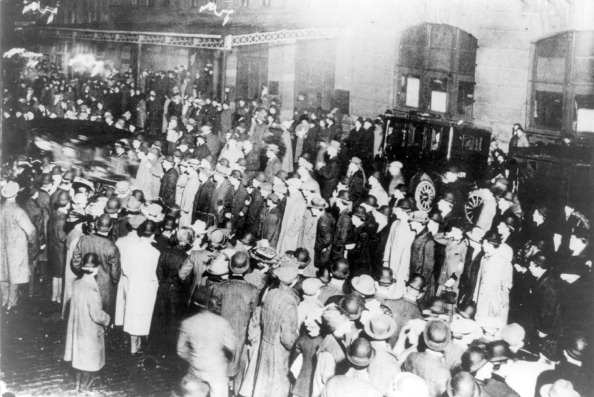
Of the estimated total count of passengers killed at sea, only 333 bodies were recovered. Some were found days, even a month later. In mid-May, the RMS Oceanic found the bodies of those aboard collapsible Boat A, as it listlessly floated at sea.
The Youngest Passenger Became Famous
Elizabeth Gladys “Millvina” Dean was only 2 months old when she boarded the Titanic with her parents and brother, Bertram. Their family had planned to move to the US where his father had cousins up in Kansas. They were among the first third-class passengers to make it up to the top deck, as advised by Dean’s father who successfully got them to board a lifeboat.

He was one of those who was lost at sea, and his body was never recovered. The Deans decided to forego their plans to immigrate in the U.S. and decided to sail back to England instead. On the way back to Southampton, Dean was the darling of the RMS Adriatic that women rivaled to hold and nurse her.
There Are No Survivors Left
Elizabeth Gladys “Millvina” Dean was not only the youngest to board the Titanic at the age of 2 months old, but she was also its last remaining survivor. She was only told about her experience when she was 8 years old, and her mother was about to remarry. She worked as a cartographer.
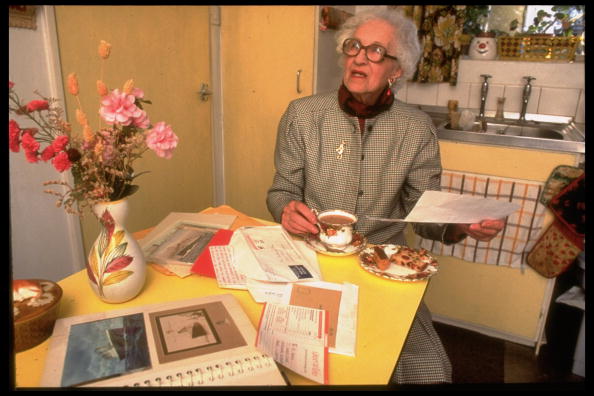
“Millvina” took part in various Titanic-related events when she was in her 80s. She died on May 31, 2009, at the age of 97. Her body was cremated and was scattered at sea from the docks of Southampton where the biggest story of her life began as she sailed the doomed liner.
The Ship Didn’t Stay Intact
Ship experts and maritime analysts believed for a long time that the Titanic sank at the bottom of the ocean in one piece. But it was found more than 70 years after the tragic accident that it had broken apart. It’ bow, and stern sections were located a third of a mile from each other.
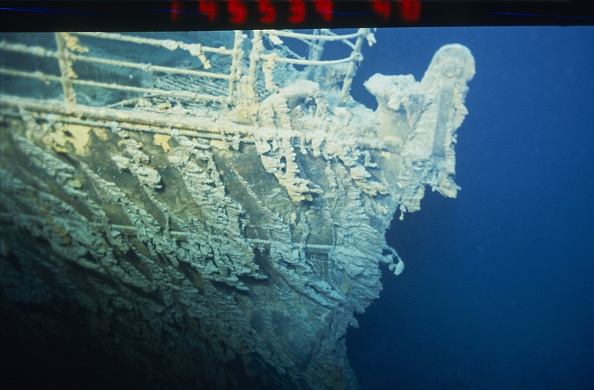
The ship’s stern was lifted almost pointing directly up to the sky as its bow gradually dove into the sea. Its propellers were exposed while the stern was kept afloat due to air trapped inside its structure. It was unable to hold its weight, and it broke off from its midsection, between the third and fourth funnel.
The Wreck Took 73 Years to Find
The sinking of the Titanic was so sudden and unexpected, its cause beyond belief, that radio operators must have panicked and given out inaccurate coordinates to their location. This caused difficulties if finding the ship’s wreckage, added to the fact that it was buried more than 12,000 feet beneath the surface.

It was discovered in 1985 in an expedition led by Robert Ballard. This discovery was 73 years after the disaster, and all attempts to raise the wreck had failed. It still remains on the seabed to this day.
A Ticket for the Titanic Is Still Expensive
Shipwrecks beckon our imaginations to their veiled dark mysteries, curtains where the story of their tragic pasts replay their final reel. Curiosity is borne through the years by pop culture works such as films and books, and the mystic surrounding the Titanic’s demise had never left us.
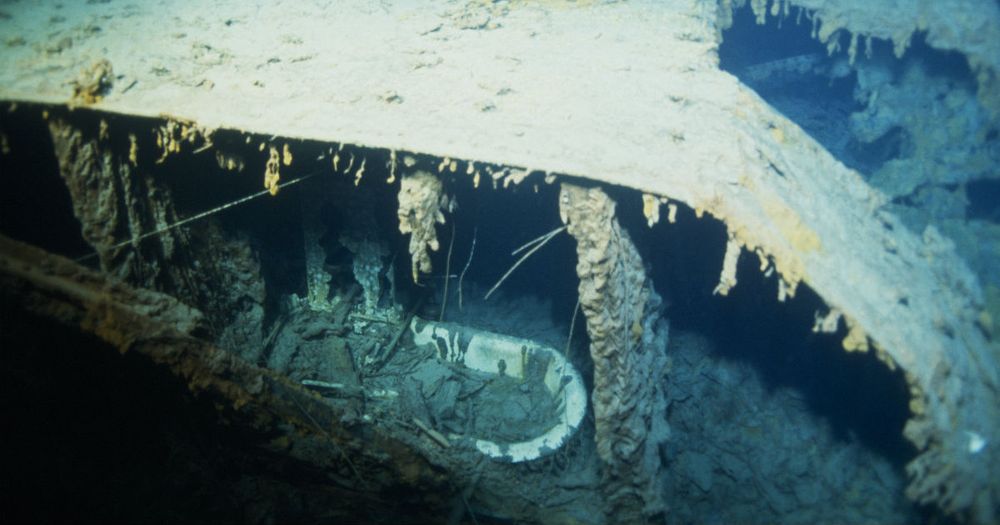
Very few know that it is now possible to view the shipwreck on the sea bed, more than 12,000 feet below the surface. The operations are handled by a company called Deep Ocean Expeditions, and anyone may examine the ship in its final resting place for $59,000 per person.
There Might Be a Titanic II
For many years there had been proposals to build a replica of the Titanic. In 2006, a project was started by a South African businessman, Sarel Gaus, but he abandoned it. Another businessman, Clive Palmer, an Australian who has iron ore, coal, and nickel holdings, plans to take on the project and name it Titanic II.
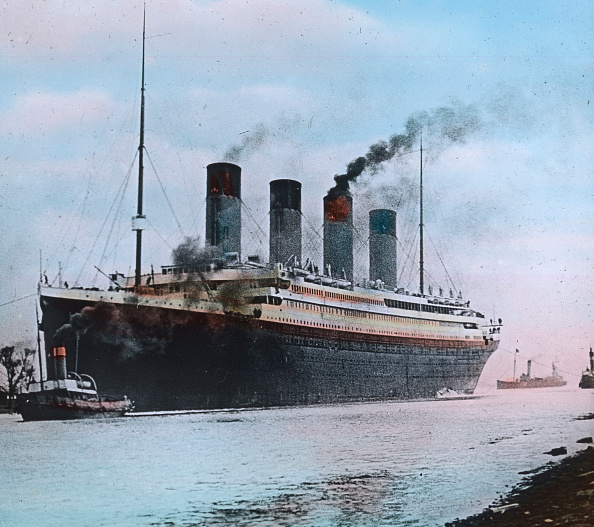
This is intended to be a fully functional replica of the oceanic liner, with a proposed budget of $500 million. Due to financial disputes, it had been moved from the initial 2016 date target to 2018, and again to 2022.
George Washington Vanderbilt II Changed His Plans at the Last Minute
George Washington Vanderbilt II was one of the notable people who was supposed to sail in the maiden voyage of the Titanic. He was the heir to the Vanderbilt fortune, amassed from railroads, steamboats, and other businesses. He canceled his trip after his mother-in-law vehemently objected to their plans, citing the dangers of maiden voyages.
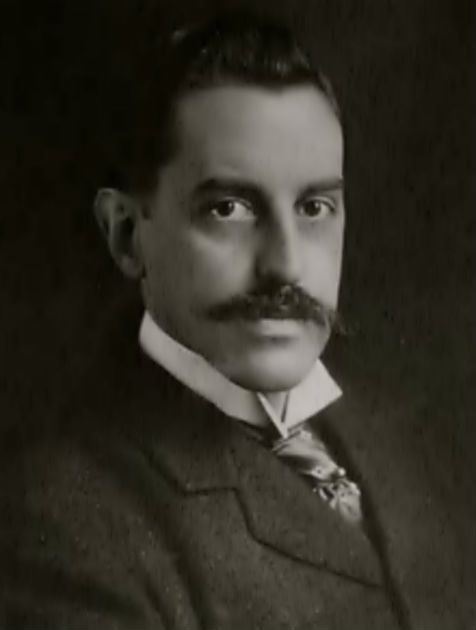
He had already sent for his luggage aboard the Titanic through his footman, Frederick Wheeler. Although their tickets were already paid for, George W. Vanderbilt II and his wife transferred to the Olympic and arrived in New York before the Titanic sank. Their footman never made it through the accident.
Theodore Dreiser Nearly Met Disaster
Theodore Dreiser was an American journalist and novelist. His best-known novels are American Tragedy and Sister Carrie. He was on his first European vacation and had planned on taking the opportunity to sail via the Titanic to return to America, but canceled his plans at the urging of his publisher.
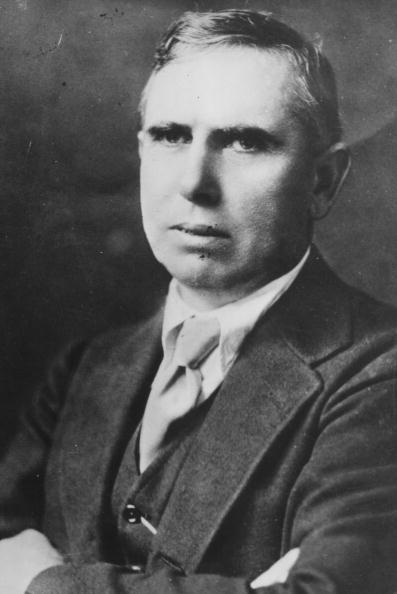
The latter wanted him to take a less expensive means of traveling, he complied. After he had learned of the tragedy, Dreiser wrote, “To think of a ship as immense as the Titanic, new and bright, sinking in endless fathoms of water. And the two thousand passengers routed like rats from their berths only to float helplessly in miles of water, praying and crying!”
Henry Clay Frick Was Saved by a Sprained Ankle
The maiden voyage of the Titanic had many opulent personalities onboard its first class accommodations and Henry Clay Frick, an American industrialist, who financed the construction of the Pennsylvania railroad had full intentions of taking that fateful trip.
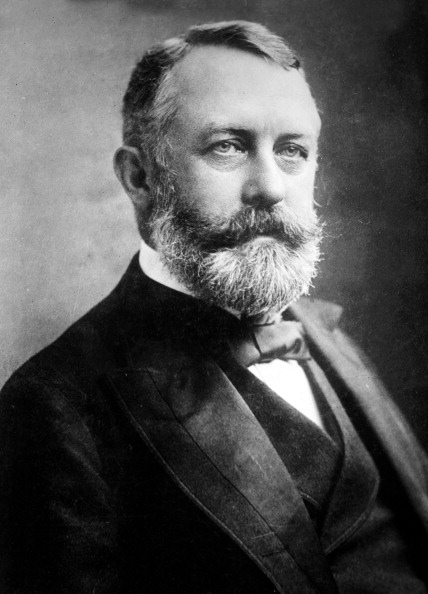
The American steel tycoon had to cancel his plans with his wife just a few days before the schedule after the latter accidentally sprained her ankle. Realizing she wouldn’t enjoy their vacation with an injury, he called off their plans for her to rest.
Guglielmo Marconi’s Personal Paperwork Kept Him Alive
Guglielmo Marconi was an Italian inventor known for his work on the radio transmission. He is also credited for the invention of the radio, and a radio telegraph system that won him the Nobel Prize he shared with Karl Ferdinand Braun. He was an important man, and his invention was a great help to shipping communications, and he was given a free pass to ride the Titanic.
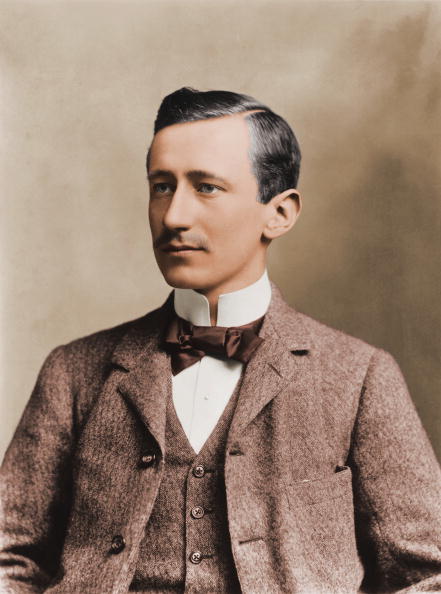
Instead of grabbing the opportunity, Guglielmo Marconi chose to sail via the Lusitania instead. His daughter said that he made that decision because he had important paperwork to do, and he preferred that ship’s telegraph operator over the Titanic’s.
The Actress Who Survived and Wrote a Film to Tell Her Story
The Titanic had many famous personalities onboard, and one of them was Dorothy Gibson, an American silent film actress. As it turns out, Gibson was one of the lucky survivors, and after arriving in New York she immediately started filming “Saved From the Titanic”, a film which she wrote and starred in.
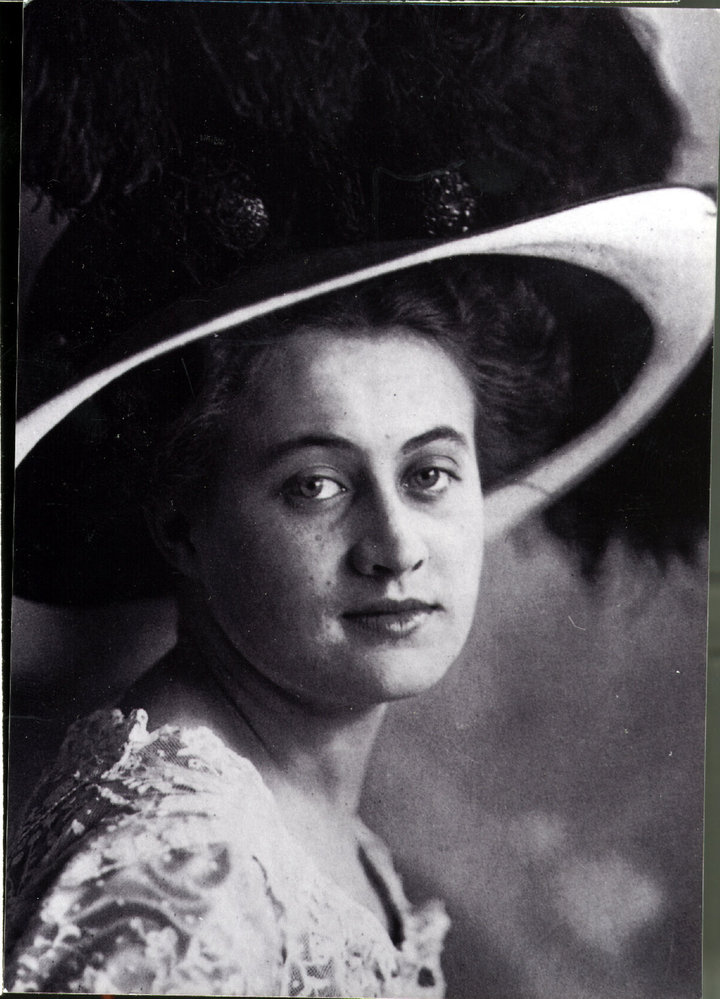
Released on May 1912, only a month after the Titanic disaster, the film depicted the events of the night when it sank. Gibson wore the same clothes and shoes in the film as she did during the actual event. Sadly, in what was described as a great loss to the silent film era, the only known print of the film was destroyed in a fire in 1914.
Over 700 Third-class Passengers and Only Two Bathtubs
It was a known fact that, even though conditions were far better on the Titanic than on an average ship, third-class passengers still had it rough. In total, there were between 700 and 1,000 passengers in third class, and only two bathtubs!
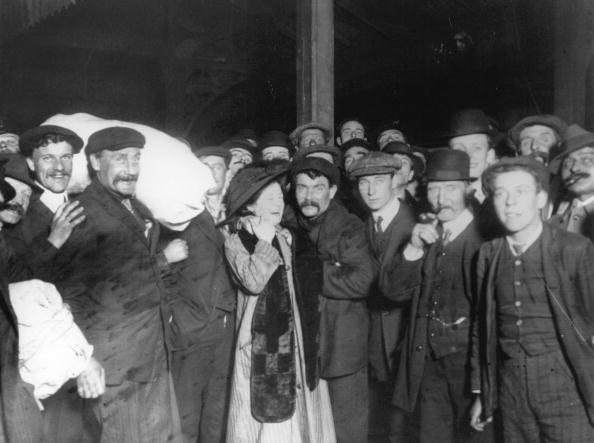
Despite the fact that passengers could clean up in their cabins by using a washbin, it wasn’t ideal for such a long trip, and having hundreds of people sharing two bathtubs was incredibly chaotic, to say the least.
The Musician That Was Only Declared Dead 88 Years Later
One of the biggest mysteries of the Titanic was the story of Roger Bricoux, the 21-year-old French cello player that was part of the eight-piece Titanic orchestra. Even though Bricoux died alongside his fellow musicians on the night of the crash on April 15th, 1912, he wasn’t actually declared dead until the year 2000.

Thinking he had survived the disaster, the French Army even considered him a deserter when he didn’t appear to serve in WWI. The French Associaton of the Titanic tried to fix what appeared to be a terrible bureaucratic mishap and worked incessantly to clear Bricoux’s name and put him to rest, but they were only able to do this 88 years after the disaster when he was finally declared dead.
The Titanic “Curse” Began With Its Construction
Some people say that the Titanic was cursed right from the start. During the ship’s construction, eight workers lost their lives, and three of them remain unidentified to this day. Unfortunately, back in 1911, when the Titanic was built, the ‘health and safety’ practices demanded in construction work today didn’t exist, and so it became almost inevitable for people in the engineering and construction fields to have fatal accidents.
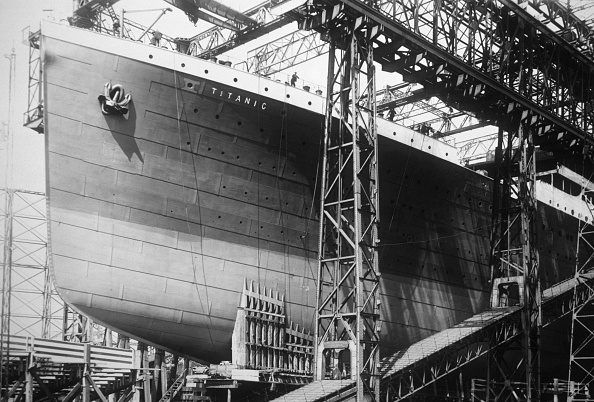
Of the eight men that passed away during the Titanic’s construction were Samuel Scott, John Kelly, William Clarke, James Dobbin, and Robert Murphy. In 2012, a plaque in Belfast was unveiled in their honor. Since most of the shipyard workers came from Belfast, it seemed appropriate to memorialize the lives of these eight men in the heart of the city.
Major Newspapers Mistakenly Reported the Titanic Disaster
Obviously, every newspaper was in a race to publish the first headline of what was one of the biggest disasters in history, and in that rush, major news outlets like The World, The Daily Mail, and the Belfast Telegraph mistakenly reported there had been no fatalities. Unfortunately, this gave false hope to the passengers’ families and loved ones.
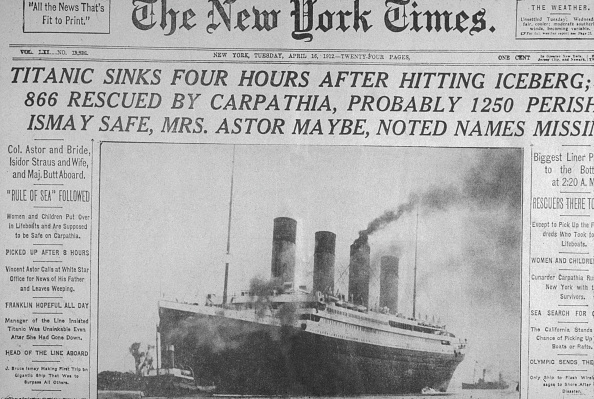
Taking advantage of the time difference, American newspapers were able to gather more information and their headlines were much more accurate. As shown in the photo above, the New York Times published the story under the headline: “Titanic Sinks Four Hours After Hitting Iceberg; 866 Rescued by Carpathia, Probably 1,250 Perish; Ismay Safe, Mrs. Astor Maybe, Noted Names Missing.”
Men Disguised as Women to Get on a Lifeboat
There were several rumors that, in a moment of desperation, a few men actually dressed up as women in order to board a lifeboat. Among them were Dickinson Bishop, J. Bruce Ismay, William Carter, and William T. Sloper, which were plagued by the rumors throughout their lives. For Dickinson Bishop, the rumors even led to a divorce.
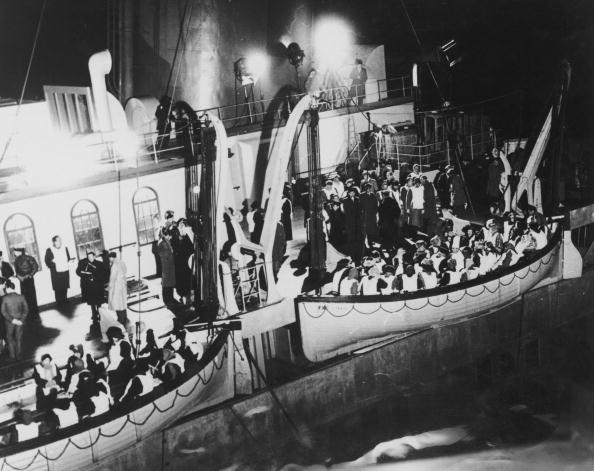
He and his wife Helen got divorced in 1916, and even though Helen claimed Dickinson was mean and a drunk, the rumors of him disguising as a woman to board the lifeboat ultimately ended their relationship. When asked about the incident, Bishop claimed there was no official order that only allowed women and children to board the lifeboats.
Not a Single Engineer Survived
So many people lost their lives when the Titanic sunk that the true heroes of the night of the crash are often forgotten. Not one of the 25 engineers on the ship survived that night, and it was because up until the very last minute, they stayed behind to keep the electricity and pumps running, even as the ship was sinking.
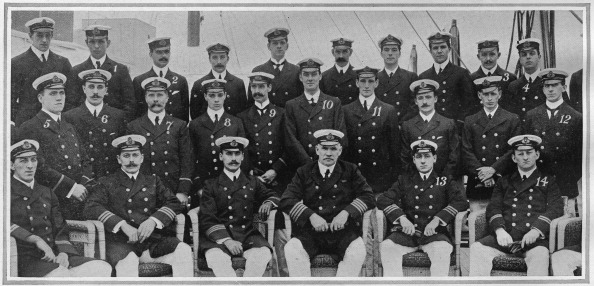
The ship’s lights only went out when every last part of it finally sunk. The engineers also kept the radio working, making sure they were putting out distress signals until seconds before the ship disappeared into the water.
The Mysterious Story of the “Titanic Orphans”
Edmond and Michel Navratil were known as the “Titanic orphans”, and they became somewhat of a media sensation at the time. The Navratil brothers were practically babies when the Titanic sank; Edmond was two and Michel was four. And, apparently, they had been kidnapped by their father, Michel Sr., who had decided to take them to America in order to get his estranged wife to follow them, hoping they could all start a new life in another continent.
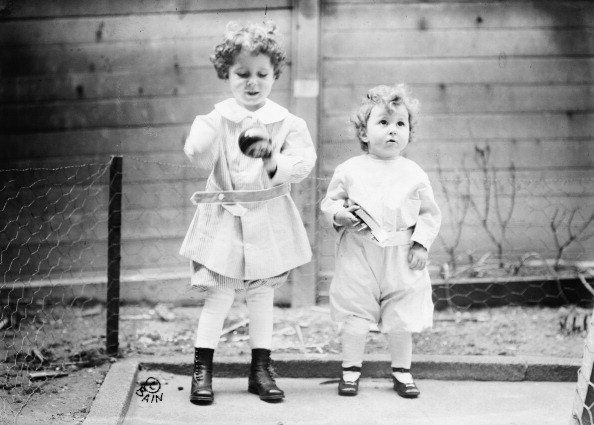
Sadly, when the ship crashed, their father put them in a lifeboat and was never heard of again. They were the only two children to be rescued without a guardian, and since they spoke no English, a French-speaking survivor named Margaret Hays took them in until their mother finally found them a month later, due to their faces being all over the news.
The Famous 1997 Film Quote That Was Actually Said in Real Life
The famous 1997 film “Titanic” by James Cameron became a landmark of cinema history. And one of the most memorable quotes in the film was said by the character of Benjamin Guggenheim, who was an actual passenger of the RMS Titanic in 1912. But what many don’t know, is that the real Guggenheim actually said this in real life.
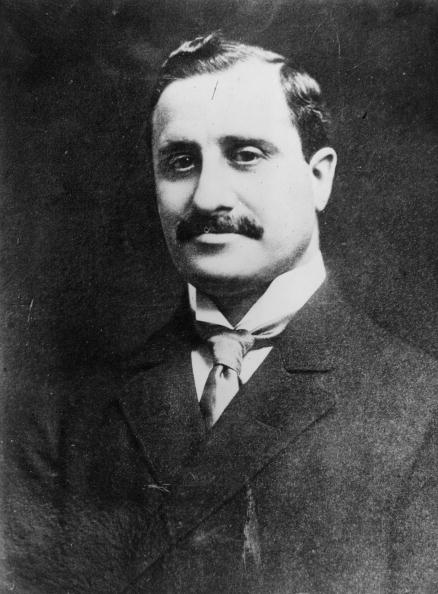
When the ship was rapidly sinking, Guggenheim refused to take a life vest and said, “We are dressed in our best and are prepared to go down as gentlemen”. Furthermore, a New York Times article that came out in April 1912 stated that Guggenheim had asked a steward to tell his wife in NY, “I’ve done my best in doing my duty.”
More than 13 Couples Were on Their Honeymoon
The Titanic was a technological marvel when it was built. It was said to be the most luxurious ship ever built, and so, many couples decided it was the perfect way to celebrate their honeymoon.
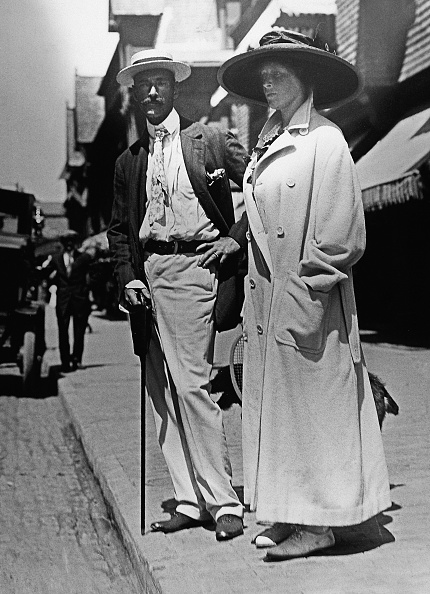
According to a book published in 2011, titled “Titanic Love Stories”, there were at least 13 couples celebrating their honeymoon on the Titanic. One of those couples was wealthy American businessman John Jacob Astor IV and his wife Madeleine.
The SS Californian Didn’t Come to the Titanic’s Aid
The SS Californian was a British steamship that would become forever known as the ship that could’ve helped the Titanic, but didn’t. It is said that the Californian was near the Titanic the night the crash happened, and due to multiple misunderstandings, failed to come to its aid.
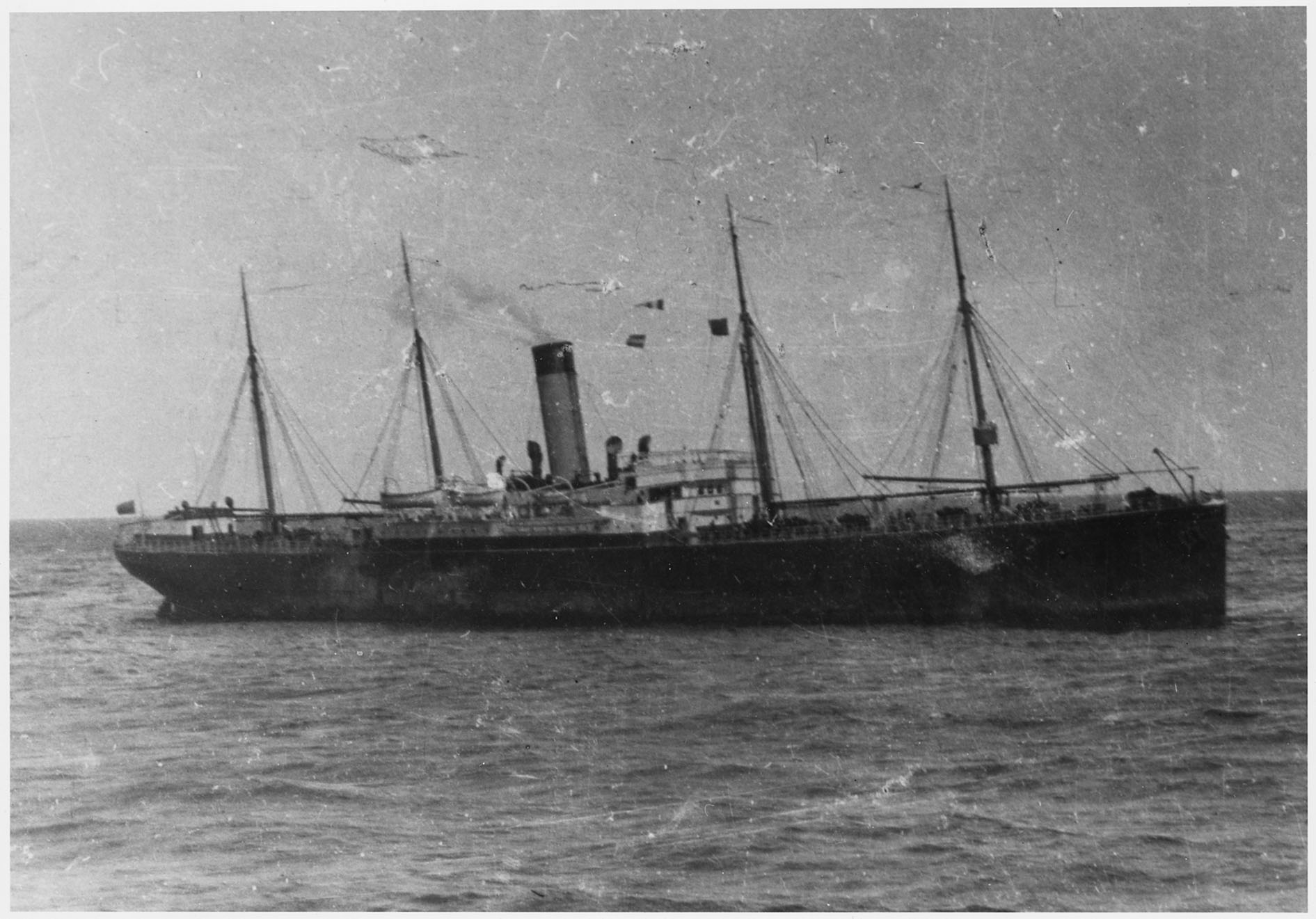
The crew on the Californian claimed their radio was shut off the night of the crash, and that the ship’s captain mistook the Titanic’s emergency flares for fireworks. By the time they got the messages, it was already too late. Ironically, three years later, the SS Californian sunk after it was torpedoed by a German submarine in WWI.
The Woman that Sank With the Ship and Survived
Of the approximately 700 survivors of the Titanic, one of them had a truly incredible story. A woman named Rhoda Mary Abbott, who was a third-class passenger actually went down with the Titanic when it sunk and still managed to survive. Abbott is the only female passenger on the ship that survived after going down with it when it sank.
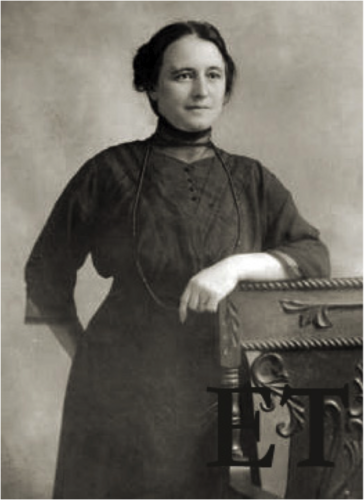
Apparently, she was on the stern when the ship sank and the ocean current swept her away from the vacuum caused by the sinking. She managed to come back up to the surface and swim over to a lifeboat close by. Unfortunately, her two young sons weren’t as lucky, and despite them being right by her when the ship went down, neither of the boys survived.
The Film Cost More to Produce Than the Ship Did to Build
Now, this is an interesting, and quite astounding, bit of trivia about the Titanic. Even when adjusted for economic inflation, the 1997 film “Titanic” cost more to produce than it cost to actually build the real-life RMS Titanic.
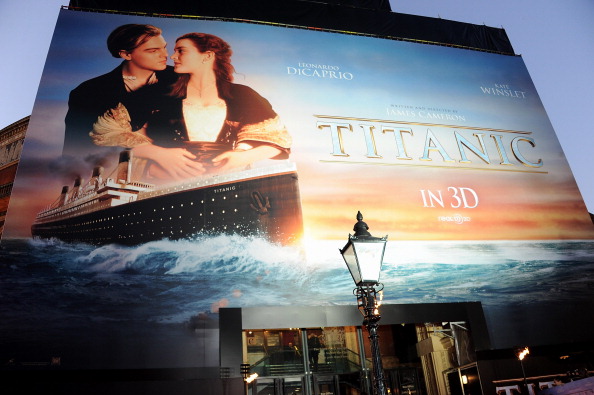
It is estimated that, back in 1912, the Titanic cost approximately $7.5 million to build, which would be roughly $190 million today. As for the film, it cost $200 million to produce in 1997, which would equal around $360 million nowadays!
Titanic’s Remains Could Completely Disappear by 2030
The Titanic shipwreck was found in 1985 near Newfoundland, a Canadian island in the Atlantic Ocean. The ship laid 3,800mts below the surface, and because of how deep it was, the wreckage was very well-preserved by the time it was discovered, even though it had been sitting there for 73 years since the crash.
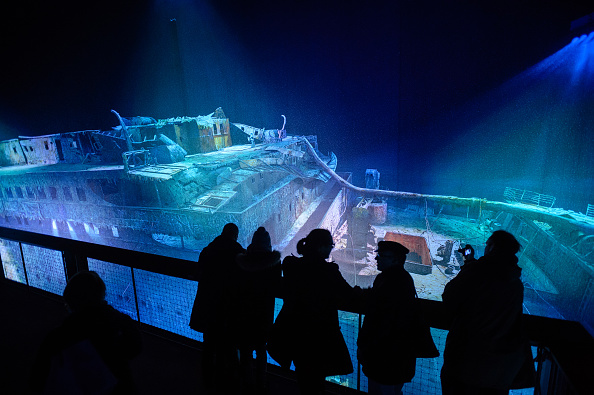
Considering that by 2019, the Titanic has been lying in the depths of the Atlantic for over 100 years, it is shocking to think that by 2030, the whole wreck could be completely gone. As scientists have explained, due to ocean bacteria eating away at the wreckage, the entire ship could be eroded by then.
A Bowler Hat That Was Right Where They Left It
In 2012, James Cameron wrote an article for National Geographic in which he recounted his experiences when exploring the Titanic’s wreckage. Among a myriad of things, each one telling a story about a particular passenger, he encountered a bowler hat that belonged to a man named Henry Harper.
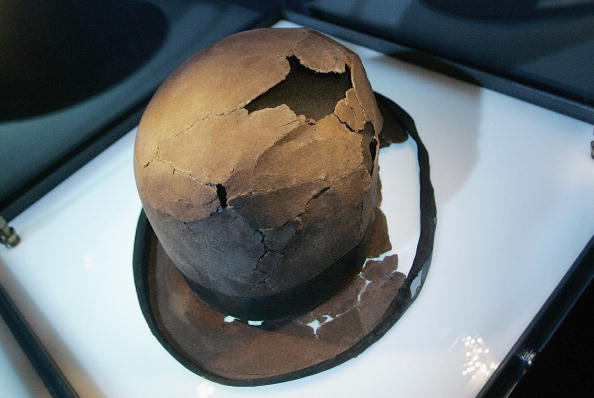
The hat was found in Harper’s D Deck cabin, inside the ruins of his closet, exactly where he left it, as if untouched by time. Harper was an American businessman and one of the few survivors of the Titanic.
Charles Joughin Owes His Life to Two Bottles of Whiskey
The most hard-core fans of the 1997 film “Titanic” will surely remember a scene where a man is briefly, but quite unforgettably, shown chugging down a flask of alcohol before going in the water as the ship is sinking. This character is based on Charles Joughin, one of the cooks aboard the RMS Titanic, that became famous for grabbing two bottles of whiskey as the ship sank.
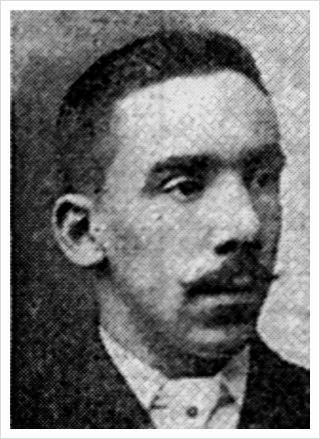
Thanks to the copious amounts of alcohol in his body, Joughin survived in the frigid waters of the Northern Atlantic ocean for at least two hours, which is incredible considering most people died from hypothermia within 15 minutes. Joughin was able to survive long enough to wait for the next lifeboat to come around, and so became one of the Titanic’s survivors.
The One Man That Predicted the Crash
Back in 1912, the Titanic was considered a groundbreaking landmark in the history of transportation and technology. No ship built before it was as technologically advanced or as aesthetically luxurious. This led many people to believe that such a piece of machinery was virtually unsinkable. However, there was one passenger that not only disagreed with this, he actually predicted an “appalling disaster”.
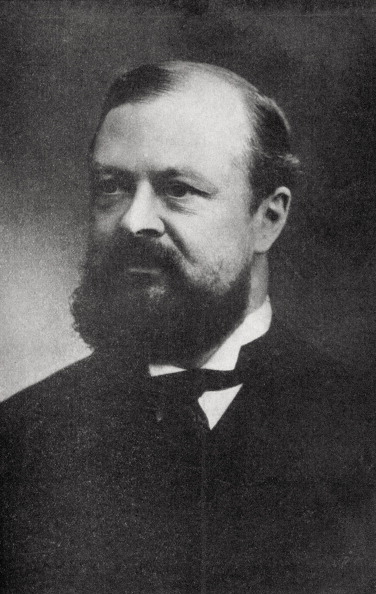
The passenger was Charles Melville Hays, the president of the Grand Trunk and Grand Trunk Pacific Railway Companies. Obviously, Hays was extremely knowledgeable when it came to transportation technologies, and when learning more about the Titanic’s construction, he had reservations about how safe it actually was to “build bigger and faster ships”. Unfortunately, Hays was not only right, he was also one of the 1,500 plus people that died in the water the night of the crash.
Out of the 1,500 People That Died, Only Four Were First-Class Women
Out of the more than 1,500 people that lost their lives the night of the sinking, only four of them were women from the first-class section. The number is quite astounding considering that, in third -class, 89 women died. And so did 387 men.
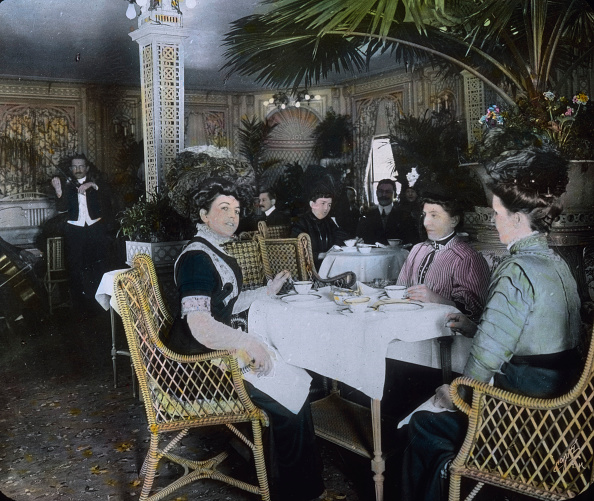
This may have been due to the fact that third-class passengers were confined to the bottom part of the ship, while first-class were on the top decks. Therefore, when it came to boarding the lifeboats, first-class passengers were much closer and had direct access. Also, women and children were urged to board the lifeboats before anybody else, which would explain the very low death toll of first-class women.
The Woman That Refused to Leave Her Dog Behind
One of the four first-class women to survive was Ann Elizabeth Isham. Shockingly, the reason Isham didn’t survive that night was that she refused to leave her pet dog behind. According to reports, Isham had already boarded a lifeboat that was ready to set sail when she suddenly realized she wasn’t allowed to take her Great Dane with her. She immediately jumped out of the boat and stayed behind with her dog.
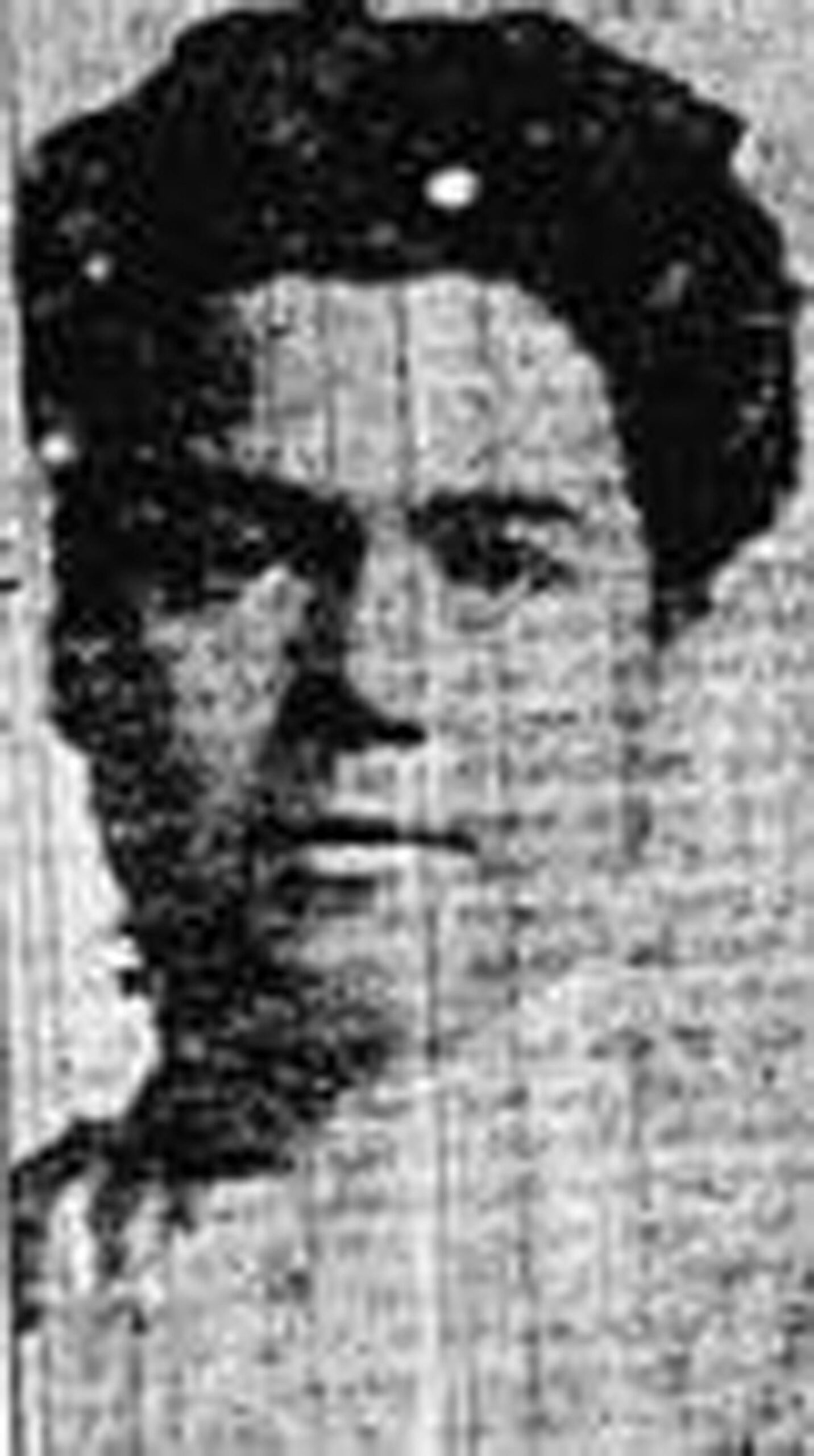
Once the ship had gone down and an official search party was scavenging the waters looking for survivors, they found a woman with her arms wrapped around a large dog; there was speculation that this was Ann Isham, but it was never confirmed.
The 100-year Old Mystery of the “Unknown Child”
Out of the 1,500 plus people that died on the night of the crash, only 300 bodies were recovered. Among them was a child’s body that was recovered from the water five days after the ship sank. Strangely, the little boy was mistakenly identified three times, and it took nearly 100 years to finally discover who he was after his shoes were donated to a museum and they ran DNA testing.
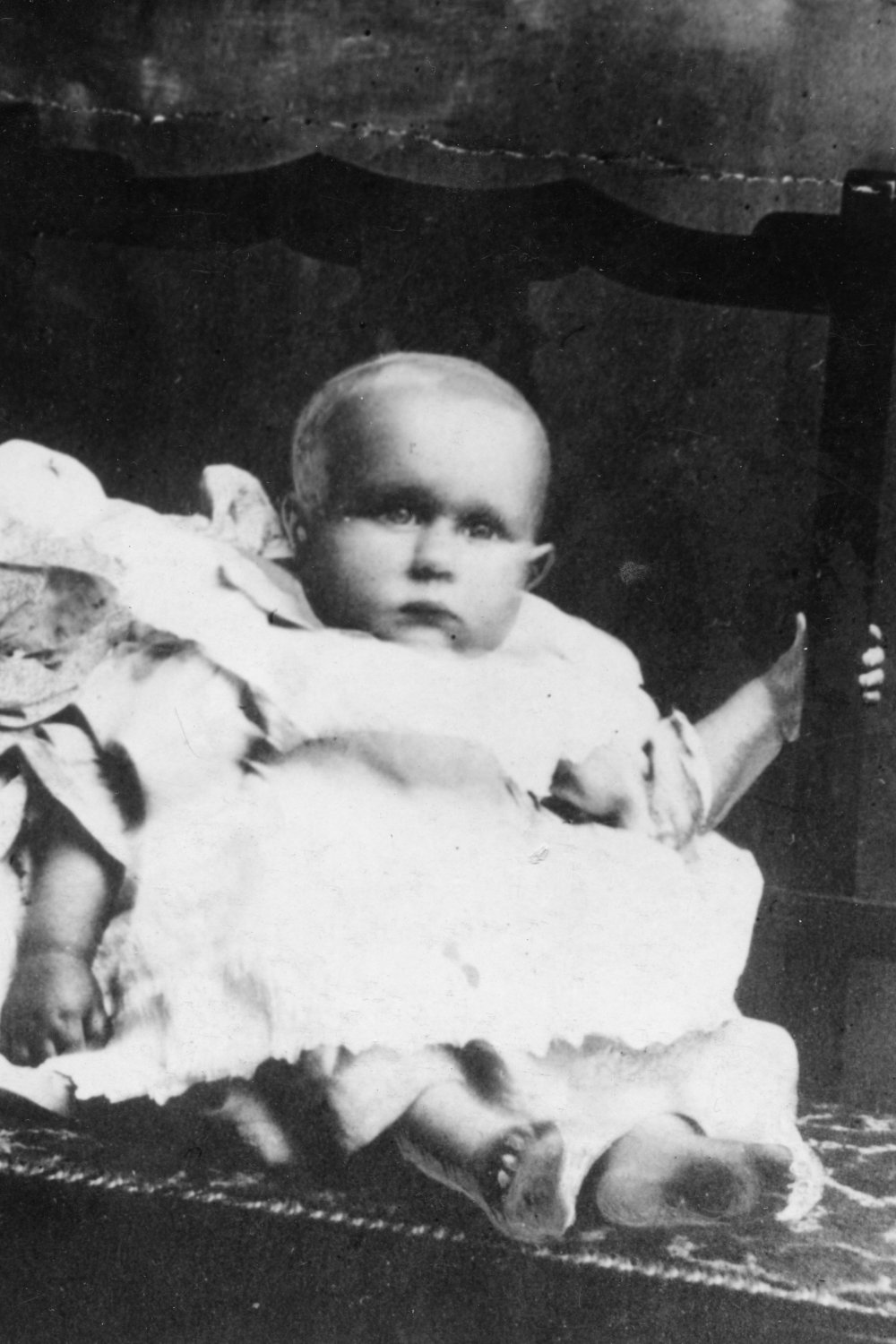
After being known as the “unknown child” of the Titanic for almost a century, the boy was identified as Sidney Goodwin. It was such a tragic moment for the rescuers that found him, that they decided to bury the little boy in a grave that would forever memorialize the 1,000 plus children that died that night. Even though his name is now known, Goodwin’s family decided to leave his headstone as it was, reading “unknown child”, in honor of all the children that were never found or identified.
The “Unsinkable” Molly Brown
One of the most famous survivors of the Titanic was a woman called Margaret Tobin, better known as Molly Brown. She became known as the “unsinkable” Molly Brown, and after surviving the crash, she went on to become a passionate philanthropist and activist.
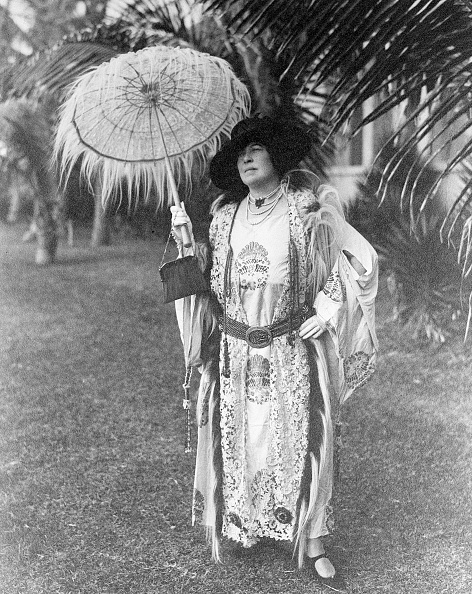
Brown was a very vocal supporter of the suffrage movement and a major help to the Red Cross during WWI. She even ran for U.S. Senate, though unsuccessfully. Her character was portrayed by the beloved Kathy Bates in James Cameron’s “Titanic”.
The “Lucky Japanese Boy”
Of the nearly 700 survivors of the Titanic, only one was Japanese. His name was Masabumi Hosono and he became known around the world as the “Lucky Japanese Boy”. However, he was quickly dubbed a coward after there were rumors that he had boarded a lifeboat dressed as a woman so they would let him on first. Even though there was no proof of this, Hosono was extensively ostracized back in Japan and called dishonorable by his fellow countrymen.
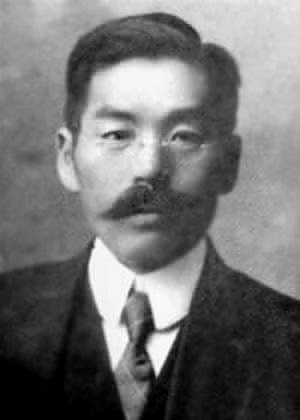
Interestingly, upon the release of the 1997 film “Titanic”, Hosono’s family decided to publish a letter he had written to his wife in which he explained that he had been ready to go down with the ship until, at the very last minute, a member of the ship’s crew shouted there was room on a lifeboat for two more people, and he got onboard next to another man.
The Famous Smokestacks
Every photo of the Titanic features the grand ship with four smokestacks. In fact, the smokestacks are what made the Titanic so distinctively recognizable throughout history. Funnily enough, only three of them actually served a purpose of carrying smoke out from the furnaces.
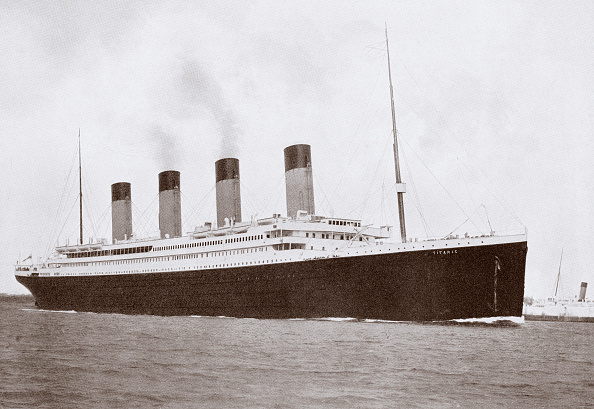
The fourth smokestack was for aesthetic purposes only, and some said ventilation. Next time you look at a photo of the Titanic, notice that only three of the smokestacks have smoke coming out of them.
The Lifeboat Drill That Never Happened
According to one survivor’s testimony, there were lifeboat drills every Sunday on the Titanic. But strangely enough, on the last Sunday before the Titanic sank, on April 14th, 1912, the drill never happened.
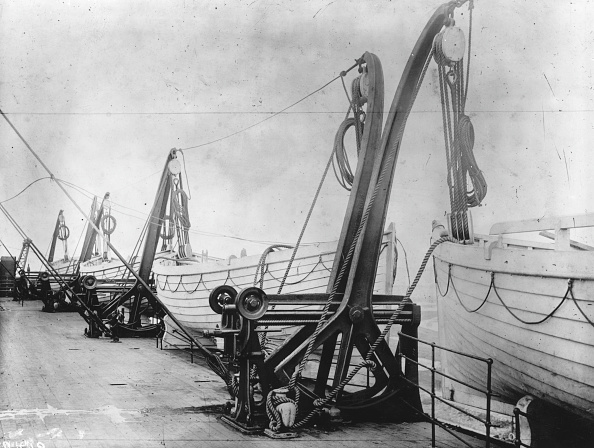
To this day, it remains unclear why the drill never took place, and even though it would’ve possibly made no difference to the tragic outcome of the crash, it definitely wouldn’t have hurt to have passengers do a drill 24 hours before the disaster.
The Inmortal Titanic Studios
The hangar where the Titanic was built in 1911 has become a famous filming location. Named “Paint Hall”, the hangar is located in Northern Ireland and is now known as Titanic Studios.

It has served as a filming location for several movies and TV shows, including “City of Ember” in 2007 (the first time it was ever used as a movie location), and most recently, “Game of Thrones”.

Unbelievable Stories From Former Abercrombie & Fitch Employees

Walmart Employees Can’t Stand This

This Kitten Became A Cop For A Day

Actresses That Underwent Shocking Transformations For Movie Roles

Netflix Original Shows, Ranked From Worst To Best

The Dark Side You Never Knew About The Wizard of Oz

What Happened to the Cast of Night Court & Behind the Scenes Facts

Cars That Will Take You The Extra Mile

Social Media Mega Stars: 50 of the World’s Highest-Earners on Tik Tok

You Won’t Believe The Affordable Prices Of These Amazing Cars


